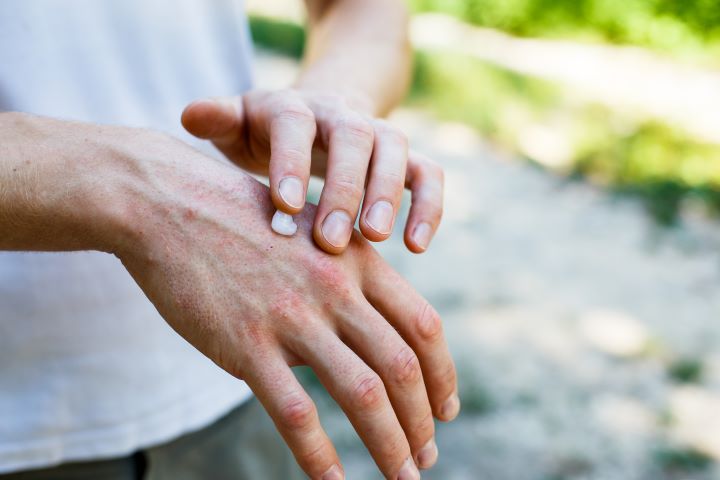Dermatitis Explained: Causes, Care & Practical Treatment
Dermatitis affects millions and shows up as redness, itching, and inflamed skin. This guide breaks down common types, underlying causes, and a range of effective treatments—from topical medications and phototherapy to home care and lifestyle changes—plus long-term management tips to reduce flare-ups and improve skin health. Learn practical prevention strategies, when to see a dermatologist, and how to combine medical and self-care approaches for better outcomes.

Dermatitis is an umbrella term for inflammatory skin conditions that cause redness, itching, and discomfort. Though symptoms often overlap, identifying the exact type of dermatitis helps shape the most effective approach to care. This guide reviews key subtypes, common triggers, medical treatments, practical home strategies, and long-term management recommendations to help people regain comfort and control over their skin.
Common types and where they appear
-
Seborrheic dermatitis: Typically found in oil-rich areas such as the scalp, sides of the nose, eyebrows, ears, and upper chest. It often causes flaky patches, itchiness, and sometimes a greasy-looking scale.
-
Dyshidrotic dermatitis: Marked by tiny, intensely itchy blisters that form on the palms, fingers, and soles of the feet. Flares can be linked to moisture, allergens, or stress.
-
Stasis dermatitis: Common in people with poor blood circulation, particularly in the lower legs. It can cause swelling, discoloration, scaling, and sometimes open sores if left untreated.
Recognizing which subtype you have is important because treatments and preventive measures differ. A dermatologist can make an accurate diagnosis and recommend the best plan.
What triggers dermatitis and how to prevent flare-ups
Triggers vary by subtype, but the following factors frequently play a role:
-
Genetics: Family history increases the likelihood of conditions like atopic dermatitis.
-
Environmental exposures: Contact with irritants or allergens, harsh soaps, and extreme temperatures can provoke symptoms.
-
Stress: Emotional stress frequently worsens itching and flares.
-
Immune response: An overreactive immune system often contributes to chronic skin inflammation.
-
Microorganisms: Bacteria, yeast, or fungi on the skin can influence or worsen certain types of dermatitis.
Prevention focuses on minimizing exposure to known triggers and supporting the skin barrier. Practical steps include using gentle, fragrance-free cleansers and moisturizers, avoiding prolonged hot showers, protecting skin from extreme weather, and managing stress with relaxation techniques. If particular foods or topical products spark symptoms, keeping a diary can help identify and avoid them.
Effective medical treatments clinicians commonly use
Medical care aims to reduce inflammation, relieve itching, and prevent complications such as infection. Typical options include:
-
Topical corticosteroids: Frequently the first-line treatment to bring flares under control. They vary in strength and should be used according to a clinician’s directions.
-
Topical calcineurin inhibitors: Non-steroidal creams or ointments useful for sensitive areas or long-term maintenance when steroid use is a concern.
-
Oral antihistamines: Help control itching, especially at night.
-
Phototherapy: Controlled ultraviolet light delivered in a clinic can improve certain resistant cases.
-
Systemic medications: For severe or widespread disease, short courses of oral corticosteroids or longer-term immunosuppressants may be prescribed.
-
Antibiotics or antifungals: Used when bacterial or fungal infections complicate dermatitis.
Treatment should be individualized based on the diagnosis, disease severity, patient history, and tolerance of therapies. Regular follow-up with a dermatologist ensures safe and effective care.
| Treatment | Typical use | Cost level |
|---|---|---|
| Topical corticosteroids | Short-term flare control | Low–Moderate |
| Topical calcineurin inhibitors | Sensitive areas, maintenance | Moderate |
| Phototherapy | Clinic-based light therapy | High |
| Systemic immunosuppressants | Severe or widespread dermatitis | High |
| Antibiotics/antifungals | When infection is present | Variable |
Cost disclaimer: Treatment costs vary widely depending on location, insurance coverage, medication choice, and clinic fees. Consult providers and payers for exact pricing.
Home care and lifestyle measures that help
Daily care measures can greatly reduce symptom frequency and severity, and often complement medical treatments:
-
Regular moisturization: Apply fragrance-free emollients frequently, especially after bathing, to restore and protect the skin barrier.
-
Wet wrap therapy: For intense flares, applying moisturizer and covering with damp bandages can soothe skin and increase hydration.
-
Gentle skin care: Use mild, soap-free cleansers, avoid scrubbing, and bathe with lukewarm rather than hot water.
-
Stress reduction: Techniques such as meditation, yoga, or cognitive-behavioral strategies can lower stress-related flares.
-
Dietary awareness: Some people notice food-related triggers; an elimination diary under clinician guidance may help identify culprits.
-
Humidifiers: Adding moisture to indoor air during dry seasons can prevent excessive skin dryness.
-
Natural remedies: Coconut oil, aloe vera, and oatmeal baths provide relief for some, but evidence varies—discuss with your clinician before starting any new remedy.
Long-term strategies for chronic dermatitis
Living with chronic dermatitis often requires a sustained, multi-pronged approach:
-
Scheduled follow-ups: Regular check-ins with a dermatologist allow adjustments to treatment and early management of complications.
-
Trigger identification and avoidance: Knowing personal triggers and avoiding them reduces flare frequency.
-
Consistent skincare routine: Maintaining gentle cleansing and moisturization routines supports long-term skin health.
-
Education and support: Understanding the condition empowers patients; psychological support can be important since chronic skin disease affects quality of life.
-
Staying informed: Advances in therapies continue; participating in clinical trials or discussing new options with a clinician may be appropriate for some patients.
Dermatitis can be persistent and frustrating, but many people achieve meaningful improvement by combining medical therapy with sensible lifestyle measures. Work closely with a dermatologist to find a tailored plan that reduces flares, treats complications, and improves comfort.
This article is for informational purposes only and should not be considered medical advice. Please consult a qualified healthcare professional for personalized guidance and treatment.






